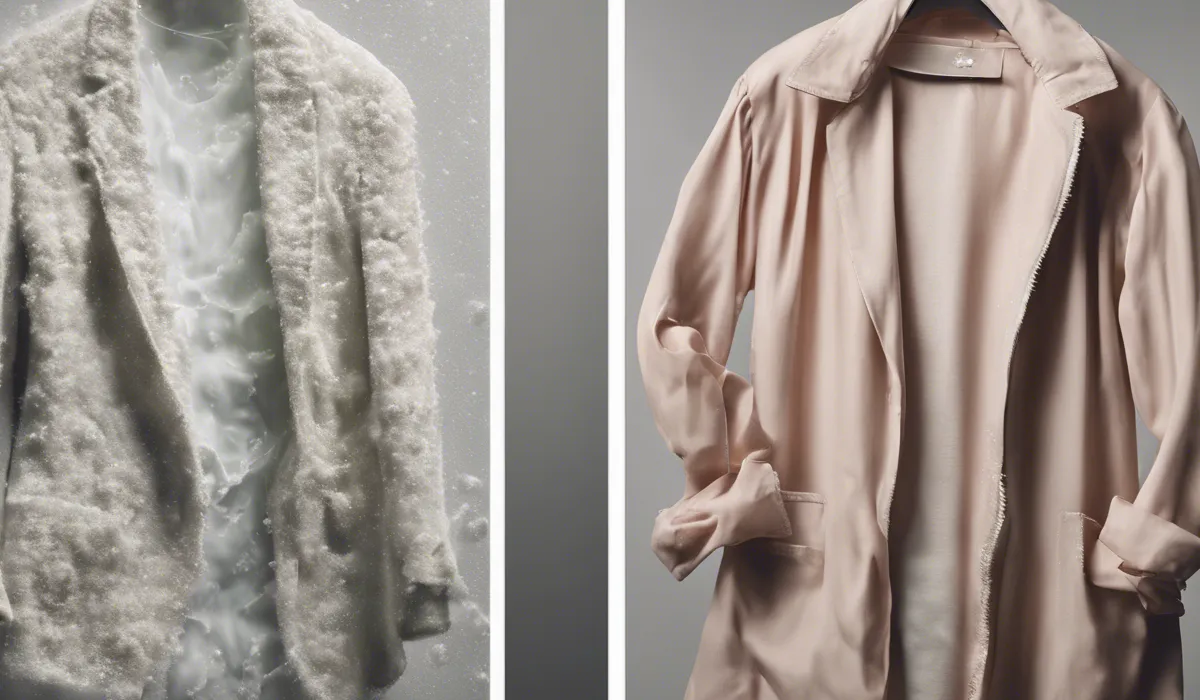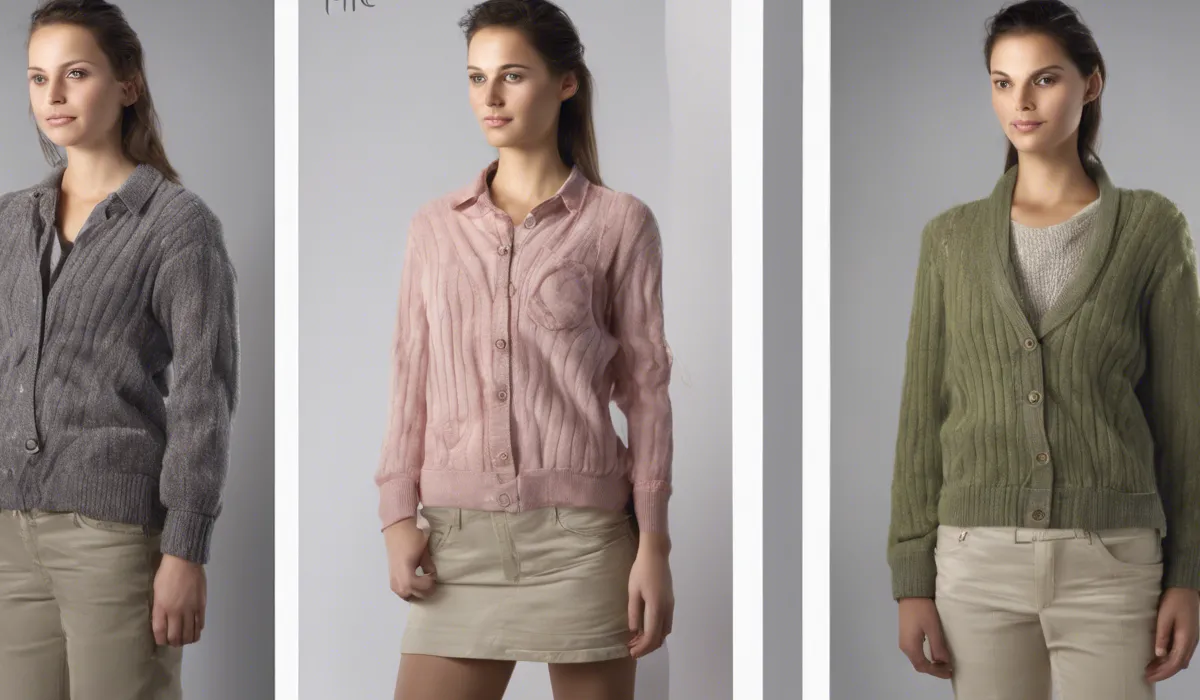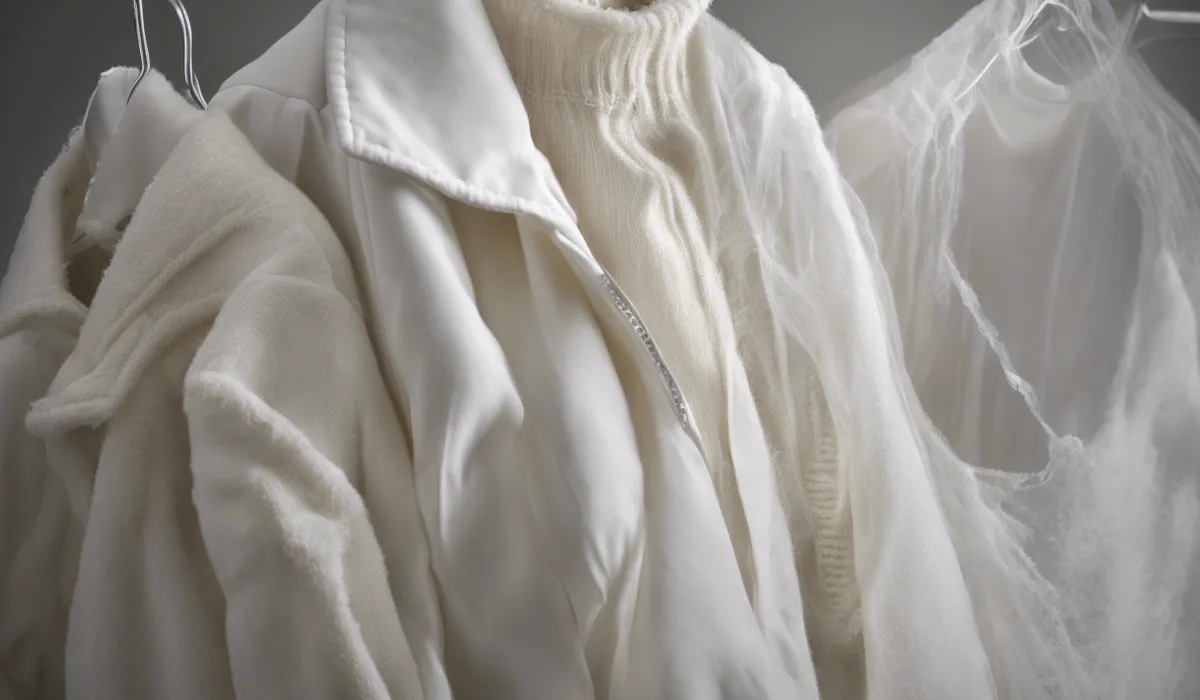Clothes can begin to mildew within 24 to 48 hours if left damp in a warm, poorly ventilated area.
Fabric type and climate conditions can affect this timeframe. Quick drying is key to prevention.
Factors Influencing Mildew Growth on Clothes

Humidity Levels
Humidity plays a pivotal role in the growth of mildew on clothes. When the air is damp, moisture clings to fabrics, creating an ideal environment for mildew spores to settle and thrive.
Especially in areas where the relative humidity exceeds 55%, clothes are more susceptible to mildew.
To keep humidity in check, it is essential to monitor the moisture levels in your home, particularly in closets, laundry areas, and basements where clothes are often stored.
Temperature
Temperature is another critical factor. Mildew favors warm conditions, typically between 77°F and 88°F (25°C and 31°C).
These temperatures can accelerate spore germination and fungal growth. It is important to maintain a cooler environment, where possible, to deter mildew from developing on your garments.
Air Circulation
Good air circulation is a natural deterrent for mildew. Stagnant air allows moisture to settle on clothes, whereas moving air helps to evaporate moisture and hinder the growth of mildew.
Ensuring that your clothing storage areas are well-ventilated can significantly reduce the risk of mildew formation.
Fabric Type
Different fabrics offer varying degrees of resistance to mildew. Synthetic fibers, such as polyester and nylon, are less prone to mildew compared to natural fibers like cotton and linen, which absorb and retain moisture more readily.
Being aware of the types of fabrics that are more susceptible to mildew can help you take extra precautions with those particular items.
Presence of Organic Material
Mildew needs organic material to feed on, and soiled clothes provide just that. Sweat, oils, and food remnants can all serve as nutrients for mildew.
Keeping your clothes clean is a key step in preventing the growth of unwanted fungi.
Previous Exposure to Mold and Mildew
Clothes that have previously been exposed to mold or mildew carry spores that can easily propagate under suitable conditions.
It is crucial to thoroughly clean and dry any garment that has been exposed to mildew to prevent it from becoming a recurring issue.
Typical Timeframe for Mildew Development on Clothes

Initial Signs of Mildew
The first signs of mildew can appear within 24 to 48 hours after exposure to damp conditions.
These initial signs may include a musty smell or a slight discoloration that is not yet visible to the naked eye. It is during this critical period that preventative measures are most effective.
Progression to Visible Mildew Growth
If clothes remain damp and in warm conditions, mildew can progress from invisible spores to visible growth in a matter of days.
You may start to see small spots or patches of mildew, which can quickly spread across fabric surfaces. It is important to act swiftly at the first sign of visual mildew to stop its spread.
Impact of Environmental Conditions on Growth Rate
The rate at which mildew grows on clothes is significantly influenced by the surrounding environmental conditions.
High humidity, warm temperatures, poor air circulation, and the presence of organic materials can all expedite the growth process.
Conversely, dry, cool, and well-ventilated environments slow down the growth of mildew, giving you more time to address the issue.
Prevention and Mitigation Strategies

Proper Storage Techniques
To prevent mildew, it is vital to store clothes in dry, cool areas with good airflow. Use breathable garment bags and avoid packing clothes too tightly in drawers or closets.
For long-term storage, consider vacuum-sealed bags that lock out moisture and protect against mildew.
Use of Dehumidifiers and Air Conditioners
Dehumidifiers and air conditioners are effective tools in controlling the climate in your home.
They reduce humidity levels and maintain cooler temperatures, creating an environment that is less conducive to mildew growth. Regular use of these appliances, especially in high-risk areas, can make a significant difference in protecting your clothes.
Regular Washing and Drying Practices
Clean clothes are less likely to develop mildew. Wash your clothes regularly and make sure they are completely dry before putting them away.
Avoid leaving damp clothes in the washing machine or laundry basket for too long, as this can be a breeding ground for mildew.
Use of Anti-Mildew Products
There are many products available that are designed to prevent mildew, including sprays, crystals, and hanging sachets that absorb moisture and leave a fresh scent.
When used properly, these products can help safeguard your clothes from the threat of mildew. Always follow the manufacturer’s instructions for the best results.
Final Thoughts
Mildew can develop on damp clothes within 24 to 48 hours in warm, poorly ventilated areas.
The timing may vary based on the type of fabric and local climate conditions. Ensuring clothes are dried promptly is crucial for preventing mildew growth.
